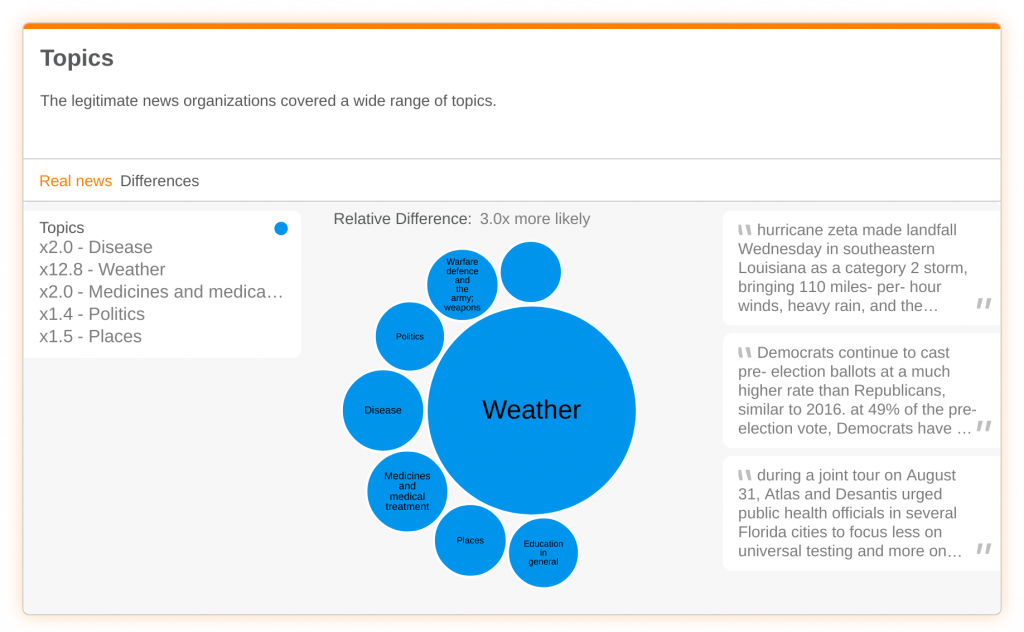How to tell the difference between real and fake news

Have you heard of the Deep State? Area 52? Or maybe you’ve come across the theory that COVID-19 was a deliberate attack against the United States? You probably have. ‘Fake news’ is everywhere, and it spreads like the virus they claim China created.
It doesn’t take much for a shocking headline to gain popularity on the internet – a sketchy link popping up on your Facebook feed every time your great uncle shares a new article. To further understand why readers fall down fake news rabbit holes after clicking on one outrageous headline, we analyzed articles published by objectively ‘fake news outlets’ and compared those to legitimate news organizations.
Using Relative Insight’s technology, we were able to pinpoint the words, phrases and topics unique to each group of publication. These linguistic insights can help us understand how ‘fake news’ and ‘real news’ writers communicate differently with readers.
Fake News
If a news outlet is claiming other organizations are fake… they’re probably lying, and are fake themselves. Fake news websites were more likely to use words like ‘fake’ and ‘hoax’ in their editorial, claiming that the “mainstream media” and Democrats perpetuate falsehoods. Fake news websites often position themselves as truth tellers in a corrupt world, rather than just reporting on the news.
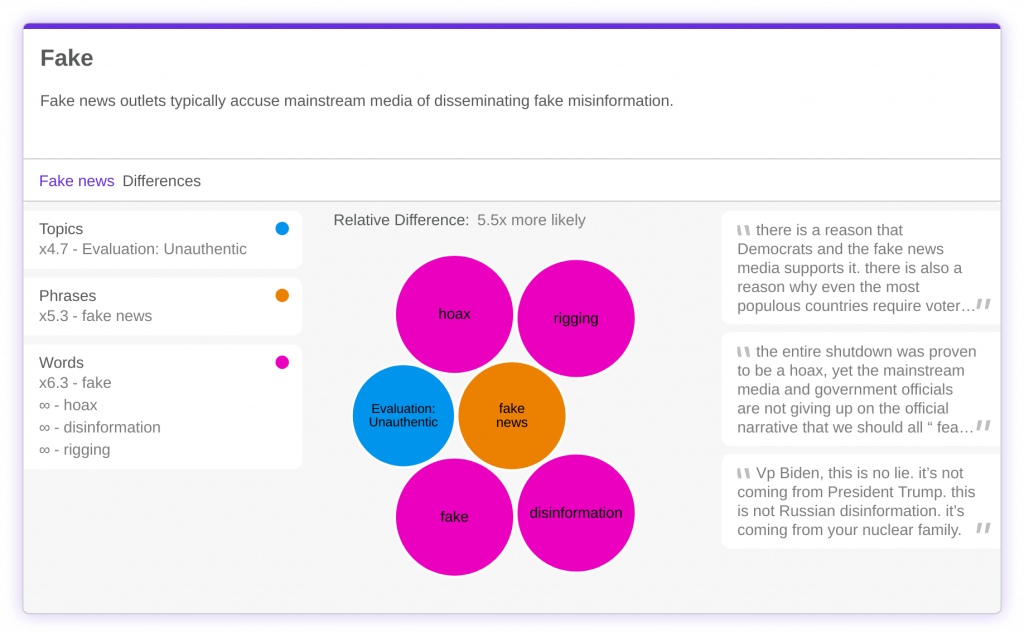

As self-proclaimed whistleblowers, fake news outlets often create content claiming government secrecy and conspiracy concerning the Deep State, which is an unknown US government comprised of high ranking unelected official. By uncovering these ‘secrets’ hidden to the public, fake news outlets are seen by supporters as vigilantes.
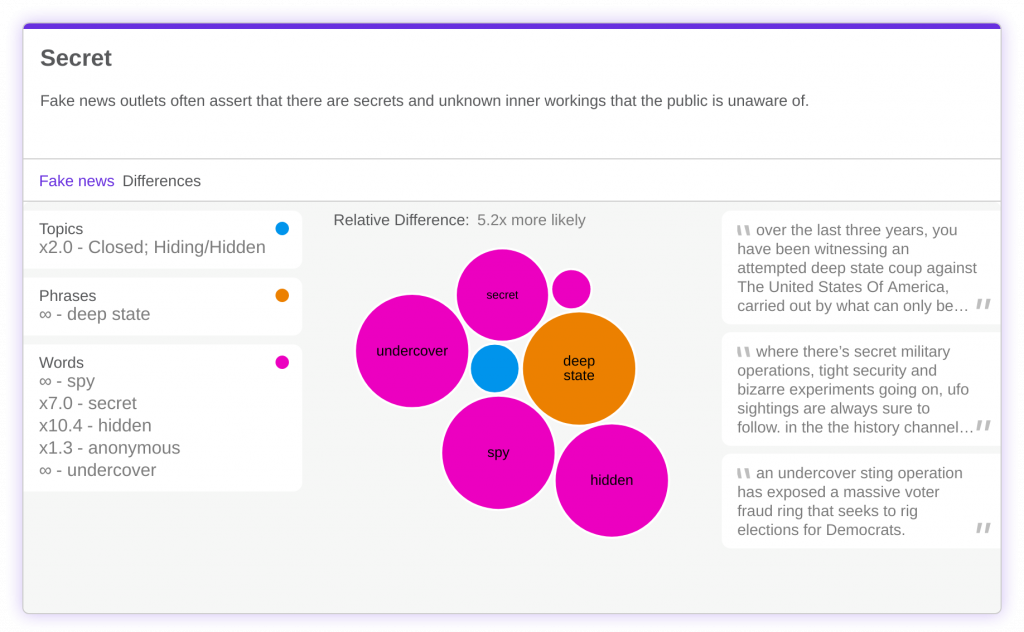

Fake news is anything but objective. Articles are often opinionated, using words like ‘stupid’ and ‘shady’ to describe individuals or events. These adjectives fuel the opinionated stance fake news often takes, relying on emotional news consumers to agree with and share the misinformation.
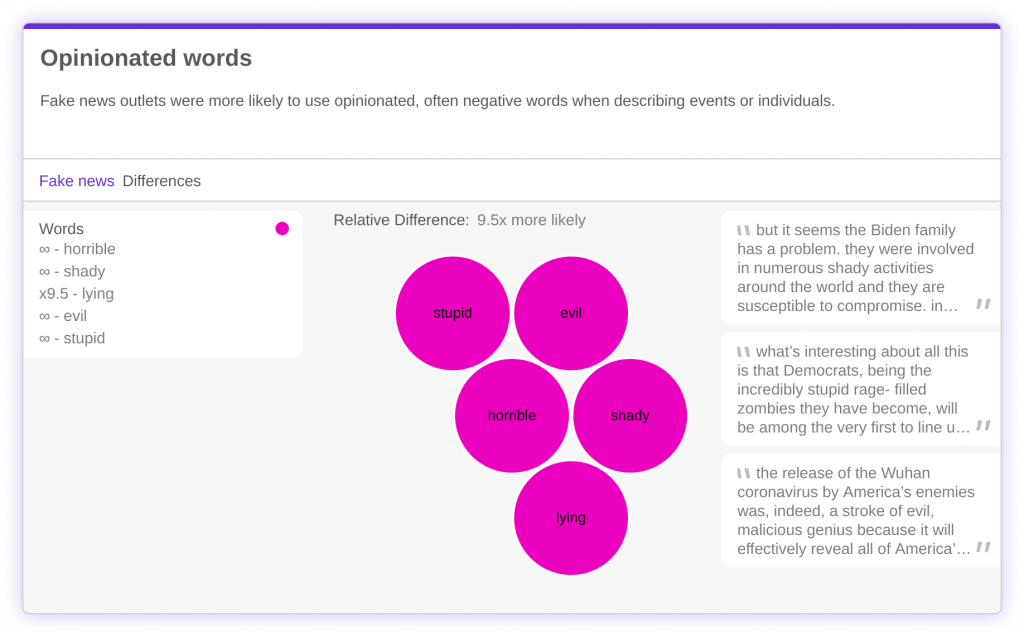

The topics found on fake news websites often concerned Black Lives Matter protests, child prostitution rings, cults and conspiracies. While some stories are entirely fabricated, others often take a topic rooted in truth and spin the story to fit the intended narrative. For example, we found lots of fake news outlets depicting the Black Lives Matter protests solely negatively, calling protesters ‘criminals’ and ‘thugs’.
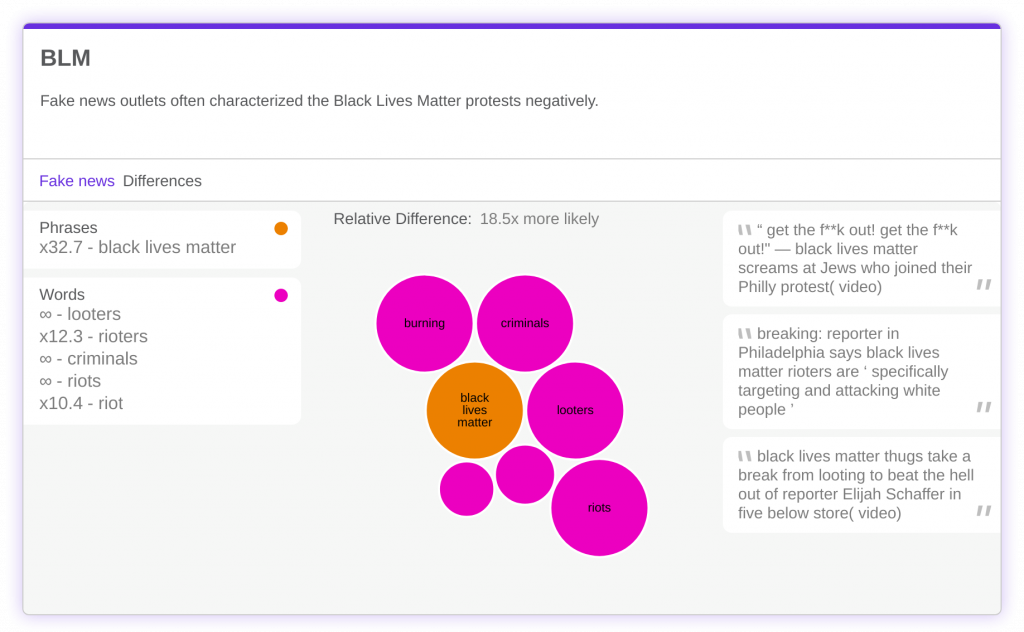

Legitimate news
One key component of good journalism is reporting. This element is seen in legitimate news organizations through the use of the word ‘said.’ Often used after a quote, this simple word is an indicator of outside sources and research. It also implies accountability, as the source is named and responsible for the information given.
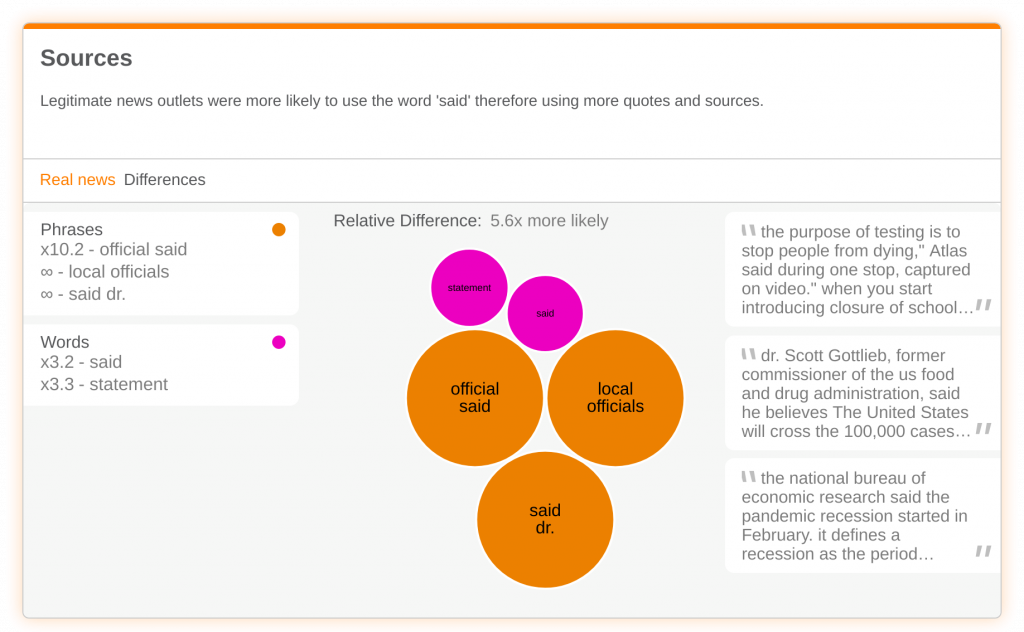

Another indicator of the reporting process is the use of specific statistics, numbers, dates, distances, etc. We found the legitimate news organizations more likely to employ these tools and metrics, adding to the accuracy of the information.
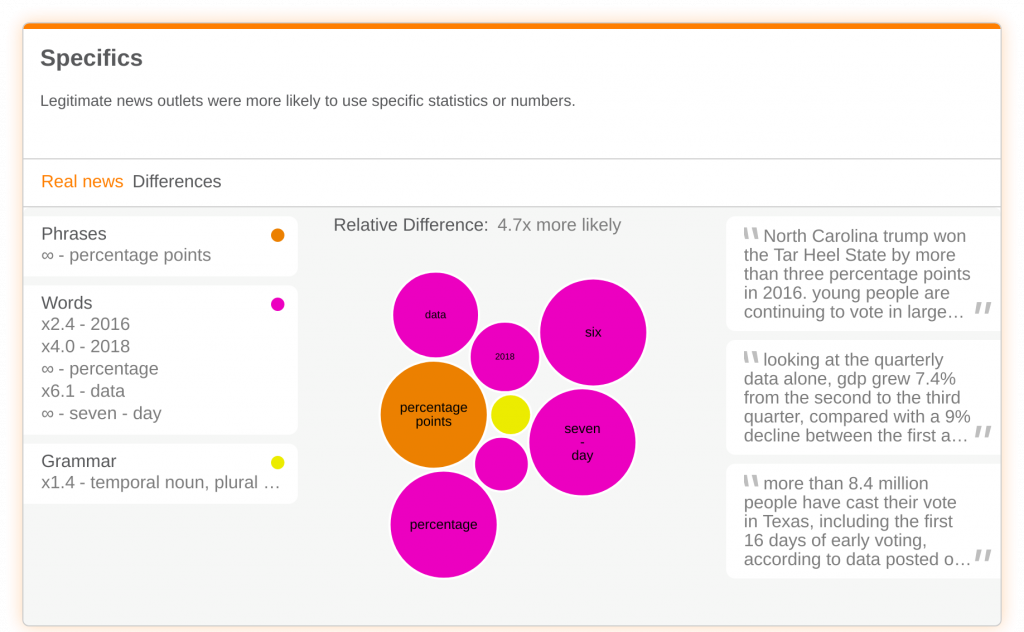

Most of the insights found for the legitimate news organizations revolved around the range of topics covered by the writers. The sample of articles we analyzed unsurprisingly dealt with politics, weather, health and more. The lack of unexpected topical insights is an indicator that the information is written in an objective, true journalistic manner.
